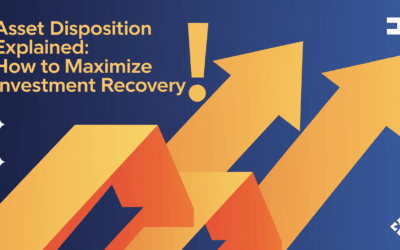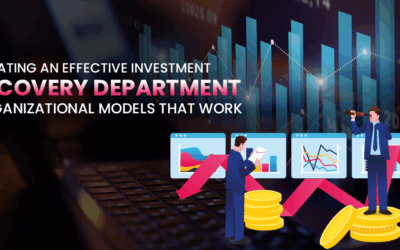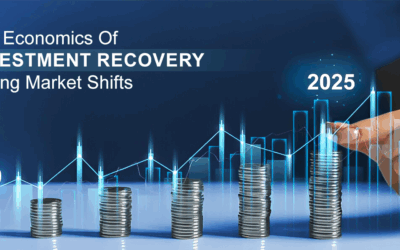Asset recovery or investment recovery has become increasingly relevant and critical for businesses—enabling organizations to maximize the value of unused or obsolete assets and optimizing resource management. Moreover, with a focus on environmental impact, sustainability, and corporate social responsibility, businesses need to be aware of the trends shaping the asset recovery industry to make better decisions. Let’s dig deeper into the upcoming trends and innovations that will define the future of asset recovery and help you be future-ready.
Assert Recovery Services Market Overview
According to a recent report from Zion, the global asset recovery services market was valued at USD 6.44 billion in 2022. It is expected to reach USD 12.26 billion by 2030 with a CAGR of around 8.55% between 2023 and 2030. This staggering growth is primarily expected due to increasing applications in the IT industry.
The leading players in the asset recovery market include Hilco Global, IBM Global Asset Recovery Services, Dell Technologies Asset Recovery Services, Sims Lifecycle Services, Atlantix, Avnet, CentricsIT, Iqor, PCM, Minntek, and NorthStar.
The Future of Asset Recovery: Key Trends and Opportunities to Watch Out for
Here are some key trends and opportunities that will shape the future of asset recovery services industry in the coming years.
-
Accelerated growth in the IT sector
The increased growth in the IT industry along with the adoption of technology across various sectors is resulting in a surplus of outdated or obsolete IT devices and equipment. As technological advancement continues, it is necessitating investment in newer systems and redundancy of unused IT equipment. Given the complexities involved in repurposing, recycling, or disposing of such systems, asset recovery services will play a key role.
-
Demand for skilled professionals
Concerns around data privacy and data security in the IT asset recovery processes have highlighted the demand for skilled professionals who are adept in securely retiring old assets. Here, businesses expect service providers to comply with stringent protocols such as the NIST SP 800-88 r1 standard (NIST-National Institute of Standards and Technology) to prevent any unauthorized access to sensitive information.
-
Strategic focus on profit margins in the wake of global economic waves
Although this trend may sound straightforward, there’s more to it. With the increasing inflation rate and competitive landscape in saturated industries, companies need to adopt winning strategies for the optimal use of resources. Undoubtedly, businesses focus on boosting sales and minimizing costs to ensure higher margins. This is where investment recovery services will play a pivotal role—helping companies reduce financial losses by implementing effective asset recovery plans for assets that are not in active use.
-
Evolving regulatory frameworks
A tight-knit regulatory framework of global, regional, and local policies and regulations will impact how asset recovery services operate. Service providers will need to navigate laws that can differ significantly among the participating customers, for instance, cross-border transactions. Notably, the type of product and industry will bring additional regulatory considerations. Such regulations will also create limitations in identifying, redeploying, or divesting products which will further complicate the asset recovery process.
-
Rise of industry-specific asset recovery services
The increasing number of industry-specific asset recovery service providers will mark the growth and diversification of the sector. For instance, in 2022, Dell Technologies introduced a dedicated asset recovery service for IT equipment and e-waste. Broker Complaint Alert (BCA) launched digital asset recovery services in 2023 in response to the worldwide increase in digital asset theft. In fact, Coinbase’s asset recovery tool for unsupported Ethereum-based tokens marks a new trend in the digital asset recovery landscape.
-
North America: the leader in the asset recovery market
The United States in North America will dominate the market due to its more mature resource recovery industry that caters to both commercial and military establishments. Even new entrants are not behind—SIPI Asset Recovery Services launched a new exchange portal in collaboration with Magenium Solutions that offers real-time data access and remote connectivity via OAUTH 2.0. Additionally, strict e-waste disposal guidelines and a strong focus on data security and privacy will contribute to the high demand for the services in the region.
Interestingly, Europe won’t fall behind with the increasing number of asset recovery service providers and businesses focused on profit optimization.
Final Words
As companies increasingly understand the value of effectively managing unused and obsolete assets, the industry will continue to grow significantly in the years to come. Notably, the asset recovery services market is at the juncture of innovation and growth, fueled by strategic business needs, technology adoption, and evolving regulations. The future of asset recovery is not just about familiarizing with these trends but capitalizing on them for sustainable growth.



